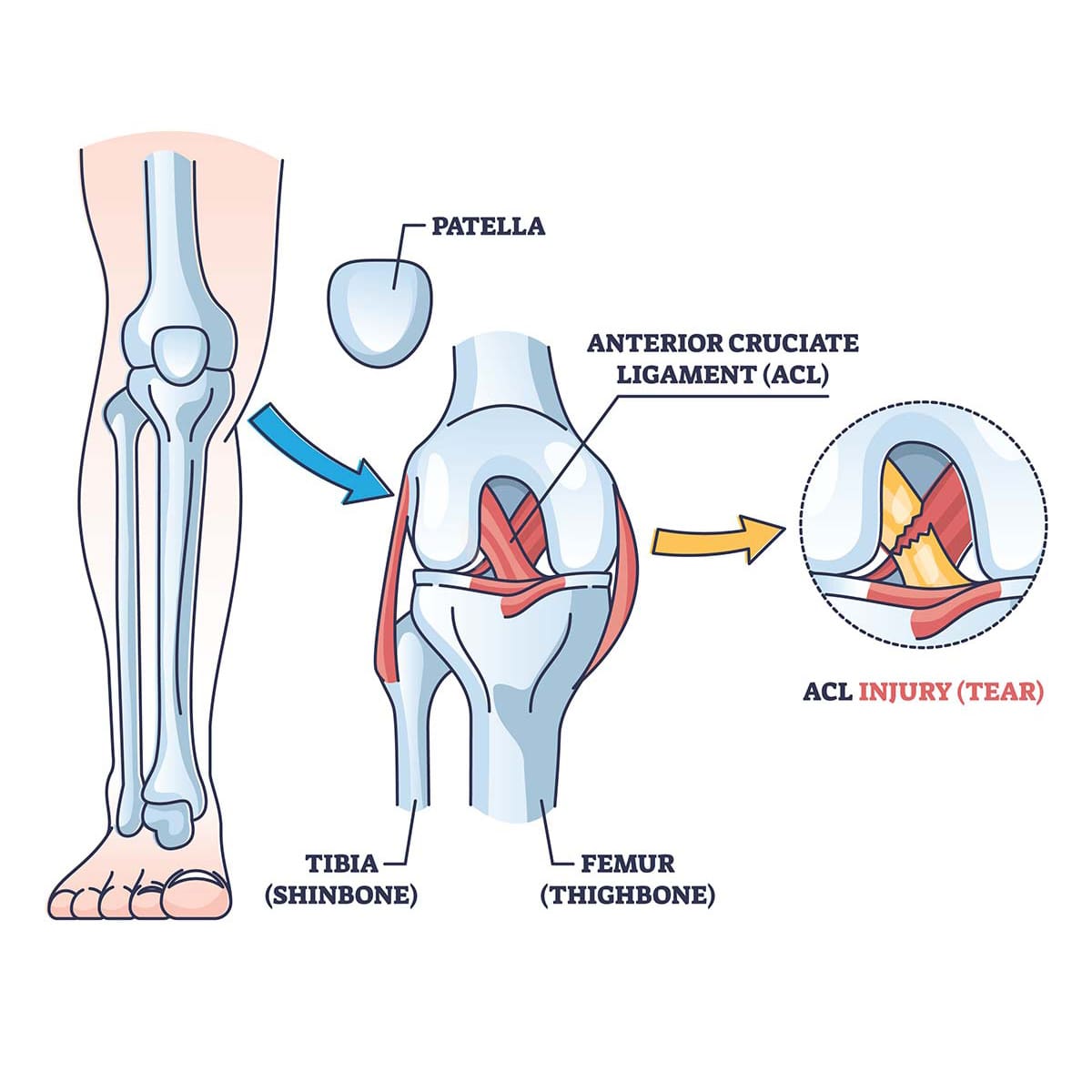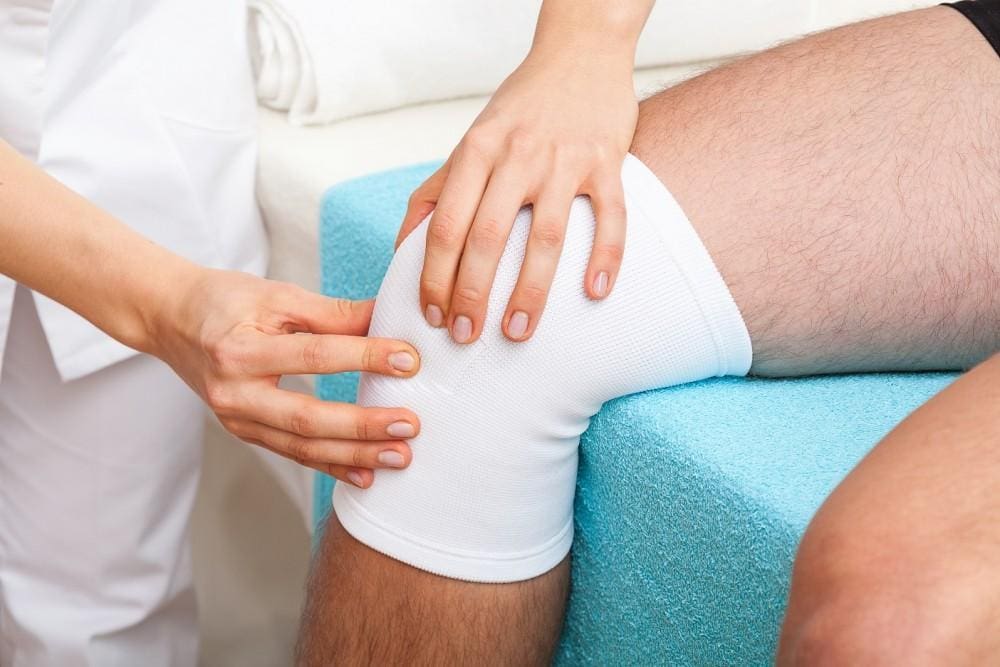Can athletic individuals with ACL injuries find relief through non-surgical treatments to restore knee mobility?
Table of Contents
Introduction
The body’s lower extremities help the individuals to be mobile but also help stabilize the body’s upper weight. From the hips to the feet, many people are on their feet and using every muscle group to allow functionality. Athletic individuals use their lower extremities to do various physical activities and are susceptible to injuries. An ACL injury is one of the most common and feared injuries that can impact an athletic person’s performance. These types of injuries affect the knees of the individual and can make a person feel miserable. However, numerous surgical and non-surgical treatments can help the recovery process of an ACL injury while helping the individual restore their motion to their lower extremities. Today’s article looks at what an ACL injury is, how it affects the knees, and how non-surgical treatments can help restore knee mobility from ACL injuries. We discuss with certified associated medical providers who consolidate our patients’ information to assess ACL injuries affecting their mobility. We also inform and guide patients while asking their associated medical provider intricate questions to integrate and provide them with numerous non-surgical treatments to be incorporated into their personalized treatment plan. Dr. Jimenez, D.C., includes this information as an academic service. Disclaimer.
What Is An ACL Injury?
Do you feel aches or pains around your knees after a long exercise regime? Do you feel or hear a loud popping sensation in your knees? Or do you experience pain and swelling affecting your ability to be mobile? Many of these pain-like scenarios are correlated with ACL injuries, that is amongst the most common and feared injuries for athletic individuals and non-athletic individuals. However, we must look at the ACL itself to better understand ACL injuries. The ACL (anterior cruciate ligament) plays an important role as it helps with knee joint stabilization, prevents excessive forward movements from the tibia (shin bone), and limits rotational knee movements. (Yoo & Marappa-Ganeshan, 2024) This ligament is one of the most injured structures affecting athletic performance. ACL injuries and tears can lead to many individuals having knee instability and an increased risk of future knee osteoarthritis. (Atik, 2024) This is because ACL injuries typically occur during physical activities involving sudden stops, jumps, or directional impacts to the knees.
How Does It Affect The Knees?
So, how do ACL injuries affect the knees of the individual? As stated earlier, the ACL is a crucial ligament that stabilizes the knee joint during movement. When that ligament is injured, it can cause pain-like symptoms like:
- Pain
- Limited range of motion
- Knee instability
- Altered biomechanics
This causes many people to have reduced physical activity levels, which can become a great economic burden to their daily routine. (Wang et al., 2020) When dealing with ACL injuries, it can also affect the meniscus in the knees as cartilage erosion often accelerates and can potentially lead to early osteoarthritis, which correlates with ACL injuries. (Key et al., 2022) However, when a person is dealing with ACL injuries, there are numerous treatments to reduce the pain-like symptoms caused by ACL injuries and help restore knee mobility.
Overcoming An ACL Injury-Video
Non-Surgical Treatments For ACL Injuries
When finding the right treatment for ACL injuries, many individuals can incorporate non-surgical treatments as part of their customized treatment plan. Non-surgical treatments can vary and may be suitable for individuals with partial ACL tears and knee instability and who have been involved in low-impact sports. When athletic individuals are dealing with ACL injuries, by incorporating non-surgical treatments, they can address the impairments, achieve functional stability, and safely return to their physical activities while improving the neuromuscular system to achieve functional knee stability. (Diermeier et al., 2020) Non-surgical treatments can positively impact many individuals by relieving the overlapping pain-like issues affecting the knees and the severity of ACL injuries.
Chiropractic Care
Chiropractic care is one of the many non-surgical treatments that can benefit individuals dealing with ACL injuries. Chiropractic care incorporates mechanical and manual manipulation to diagnose and treat any musculoskeletal issues associated with ACL injuries and emphasizes the body’s natural ability to heal itself. For many athletic and non-athletic individuals with ACL injuries, chiropractic care can offer several benefits:
- Pain management
- Enhancing mobility and flexibility
- Improving balance
- Strengthening supporting muscles
Chiropractic care can help individuals by stretching and strengthening weak muscles and soft tissues that can help break down scar tissues that may have surrounded the knee while improving blood flow to the injured area. Chiropractors can also incorporate specific rehabilitation exercises and physical therapy for the individual, focusing on strength, flexibility, and stability in the knees and surrounding muscles.
Physical Therapy
Another form of non-surgical treatment is through physical therapy. Physical therapy can help many individuals with ACL injuries through strength training, balance, and range of motion exercises that are catered to strengthen the surrounding muscles and help maintain the knee’s stability, flexibility, and mobility. Stretching exercises like Pilates and Tai Chi are favorable for ACL rehabilitation as they are important for functional outcomes and ACL stability. (Giummarra et al., 2022) Additionally, many individuals can utilize a functional knee brace to provide additional support to the knees when doing any physical therapy, as they can help stabilize the knee and prevent unwanted movements that could exacerbate the ACL injury. While ACL injuries are serious, non-surgical treatments offer viable alternatives for many athletes. Individuals can effectively manage their injuries and lead active, fulfilling lives by focusing on physical therapy, utilizing supportive braces, and adopting lifestyle modifications.
References
Atik, O. S. (2024). The risk factors for second anterior cruciate ligament (ACL) tear after ACL reconstruction. Jt Dis Relat Surg, 35(2), 255-256. https://doi.org/10.52312/jdrs.2024.57920
Diermeier, T., Rothrauff, B. B., Engebretsen, L., Lynch, A. D., Ayeni, O. R., Paterno, M. V., Xerogeanes, J. W., Fu, F. H., Karlsson, J., Musahl, V., Svantesson, E., Hamrin Senorski, E., Rauer, T., Meredith, S. J., & Panther Symposium, A. C. L. T. C. G. (2020). Treatment after anterior cruciate ligament injury: Panther Symposium ACL Treatment Consensus Group. Knee Surg Sports Traumatol Arthrosc, 28(8), 2390-2402. https://doi.org/10.1007/s00167-020-06012-6
Giummarra, M., Vocale, L., & King, M. (2022). Efficacy of non-surgical management and functional outcomes of partial ACL tears. A systematic review of randomised trials. BMC Musculoskelet Disord, 23(1), 332. https://doi.org/10.1186/s12891-022-05278-w
Key, S., Baygin, M., Demir, S., Dogan, S., & Tuncer, T. (2022). Meniscal Tear and ACL Injury Detection Model Based on AlexNet and Iterative ReliefF. J Digit Imaging, 35(2), 200-212. https://doi.org/10.1007/s10278-022-00581-3
Wang, L. J., Zeng, N., Yan, Z. P., Li, J. T., & Ni, G. X. (2020). Post-traumatic osteoarthritis following ACL injury. Arthritis Res Ther, 22(1), 57. https://doi.org/10.1186/s13075-020-02156-5
Yoo, H., & Marappa-Ganeshan, R. (2024). Anatomy, Bony Pelvis and Lower Limb, Knee Anterior Cruciate Ligament. In StatPearls. https://www.ncbi.nlm.nih.gov/pubmed/32644659
Disclaimer
Post Disclaimer
Professional Scope of Practice *
The information herein on "Treating ACL Injuries Without Surgery: Non-Surgical Methods and Benefits" is not intended to replace a one-on-one relationship with a qualified health care professional or licensed physician and is not medical advice. We encourage you to make healthcare decisions based on your research and partnership with a qualified healthcare professional.
Blog Information & Scope Discussions
Welcome to El Paso's Premier Wellness, Personal Injury Care Clinic & Wellness Blog, where Dr. Alex Jimenez, DC, FNP-C, a Multi-State board-certified Family Practice Nurse Practitioner (FNP-BC) and Chiropractor (DC), presents insights on how our multidisciplinary team is dedicated to holistic healing and personalized care. Our practice aligns with evidence-based treatment protocols inspired by integrative medicine principles, similar to those found on this site and our family practice-based chiromed.com site, focusing on restoring health naturally for patients of all ages.
Our areas of multidisciplinary practice include Wellness & Nutrition, Chronic Pain, Personal Injury, Auto Accident Care, Work Injuries, Back Injury, Low Back Pain, Neck Pain, Migraine Headaches, Sports Injuries, Severe Sciatica, Scoliosis, Complex Herniated Discs, Fibromyalgia, Chronic Pain, Complex Injuries, Stress Management, Functional Medicine Treatments, and in-scope care protocols.
Our information scope is multidisciplinary, focusing on musculoskeletal and physical medicine, wellness, contributing etiological viscerosomatic disturbances within clinical presentations, associated somato-visceral reflex clinical dynamics, subluxation complexes, sensitive health issues, and functional medicine articles, topics, and discussions.
We provide and present clinical collaboration with specialists from various disciplines. Each specialist is governed by their professional scope of practice and their jurisdiction of licensure. We use functional health & wellness protocols to treat and support care for musculoskeletal injuries or disorders.
Our videos, posts, topics, and insights address clinical matters and issues that are directly or indirectly related to our clinical scope of practice.
Our office has made a reasonable effort to provide supportive citations and has identified relevant research studies that support our posts. We provide copies of supporting research studies upon request to regulatory boards and the public.
We understand that we cover matters that require an additional explanation of how they may assist in a particular care plan or treatment protocol; therefore, to discuss the subject matter above further, please feel free to ask Dr. Alex Jimenez, DC, APRN, FNP-BC, or contact us at 915-850-0900.
We are here to help you and your family.
Blessings
Dr. Alex Jimenez DC, MSACP, APRN, FNP-BC*, CCST, IFMCP, CFMP, ATN
email: coach@elpasofunctionalmedicine.com
Multidisciplinary Licensing & Board Certifications:
Licensed as a Doctor of Chiropractic (DC) in Texas & New Mexico*
Texas DC License #: TX5807, Verified: TX5807
New Mexico DC License #: NM-DC2182, Verified: NM-DC2182
Multi-State Advanced Practice Registered Nurse (APRN*) in Texas & Multi-States
Multistate Compact APRN License by Endorsement (42 States)
Texas APRN License #: 1191402, Verified: 1191402 *
Florida APRN License #: 11043890, Verified: APRN11043890 *
License Verification Link: Nursys License Verifier
* Prescriptive Authority Authorized
ANCC FNP-BC: Board Certified Nurse Practitioner*
Compact Status: Multi-State License: Authorized to Practice in 40 States*
Graduate with Honors: ICHS: MSN-FNP (Family Nurse Practitioner Program)
Degree Granted. Master's in Family Practice MSN Diploma (Cum Laude)
Dr. Alex Jimenez, DC, APRN, FNP-BC*, CFMP, IFMCP, ATN, CCST
My Digital Business Card
RN: Registered Nurse
APRNP: Advanced Practice Registered Nurse
FNP: Family Practice Specialization
DC: Doctor of Chiropractic
CFMP: Certified Functional Medicine Provider
MSN-FNP: Master of Science in Family Practice Medicine
MSACP: Master of Science in Advanced Clinical Practice
IFMCP: Institute of Functional Medicine
CCST: Certified Chiropractic Spinal Trauma
ATN: Advanced Translational Neutrogenomics






 Again, We Welcome You.
Again, We Welcome You.
Comments are closed.